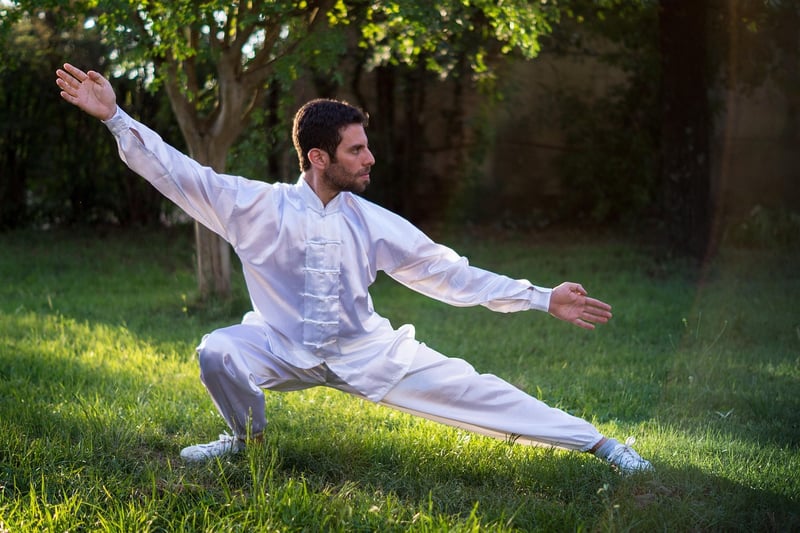Qi Gong
The Art of Balanced Movement for Harmony: A Guide to Qi Gong

Qi Gong, an ancient Chinese practice, embodies the concept of balanced movement for achieving harmony in both body and mind. It focuses on cultivating and balancing the body's vital energy, known as "Qi," through mindful movements, breathing techniques, and meditation.
Benefits of Qi Gong:
- Improves physical strength and flexibility
- Enhances mental clarity and focus
- Boosts immune system function
- Reduces stress and anxiety levels
- Promotes overall well-being and balance
Key Principles of Qi Gong:
- Alignment: Maintaining proper posture and alignment during movements
- Breath: Focusing on deep, slow, and rhythmic breathing
- Intent: Cultivating a clear intention and mindfulness during practice
- Flow: Allowing movements to flow smoothly and continuously
- Balance: Seeking harmony and balance in both body and mind
Practicing Qi Gong:
To start your Qi Gong practice, find a quiet and peaceful space where you can move freely. Wear loose, comfortable clothing and begin with gentle warm-up exercises to prepare your body. Focus on your breath, relax your mind, and perform slow and deliberate movements, coordinating them with deep breathing.
Try to practice Qi Gong regularly, even if it's just for a few minutes each day. Consistency is key to experiencing the full benefits of this ancient art form.
Joining a Qi Gong Class:
If you prefer guided instruction and a sense of community, consider joining a Qi Gong class led by an experienced instructor. This can help deepen your practice, refine your techniques, and connect with others who share your interest in balanced movement and harmony.
Whether you choose to practice Qi Gong on your own or in a group setting, remember that the essence of Qi Gong lies in the mindful cultivation of energy and the harmonious balance of body, mind, and spirit.
Embrace the art of Qi Gong and embark on a journey towards holistic well-being and inner harmony.
